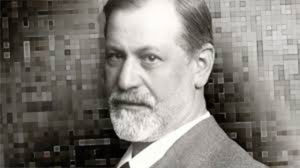Le langage de l’absent.
Résumé
Les études sur les traumatismes collectifs et les catastrophes sociales historiques post-Shoah convergent sur ce point : le traumatisme le plus grave est celui qui n’a pas été transcrit dans le langage parce qu’excé- dant les capacités de l’appareil psychique.
L’« enregistrement » du traumatisme, son inscription dans la pensée et le langage, sont rendus possibles 1) par la reconstruction de la réalité
«externe » historique. C’est une opération douloureuse qui suscite des attitudes défensives ; 2) par un travail sur les défenses, en partant de celles de l’analyste, qui est un « écoutant/auditeur » du traumatisme et en devient le témoin.
Pour l’analyste, écrire sur le traumatisme collectif signifie affronter ses défenses devant la douleur et l’émoussement que l’exposition au trau- matisme provoque. Comment peut-on s’identifier avec les victimes du traumatisme sans demeurer dans cette position de blocage ? Com- ment éviter de devenir un voyeur envers les victimes ?
Tout d’abord, précisons qu’à mon avis, l’écriture en soi ne peut assumer une valeur transformative, et peut même coïncider avec une effrac- tion traumatisante redoutable pour l’appareil psychique. Cependant, l’écriture peut être le signal de la réélaboration et de l’avènement d’un processus réparateur, dans la mesure où elle rencontre un « écoutant empathique » qui soutient la fonction de témoin intérieur. Cet écoutant empathique peut être un objet interne, intériorisé, un individu « réel », ou un groupe.
Samenvatting
Op grond van studies over collectieve traumata en sociale catastrofes na de Shoah blijkt dat een trauma ernstiger is als het niet kan inge- schreven worden in de taal omdat de capaciteiten van het psychisch apparaat overschreden worden.
Het inschrijven van het trauma in het denken en in de taal wordt mo- gelijk gemaakt door de reconstructie van de externe, historische reali- teit : 1. Dit is een pijnlijke operatie die defensieve houdingen tot stand brengt. 2. Door het bewerken van deze defensies kan de analyticus het trauma beluisteren en wordt hij de getuige ervan.
De analyticus die schrijft over het collectieve trauma zal ondervinden dat de pijn die de blootstelling aan het trauma opwekt, zijn verdedi- gingsmechanismen uitdaagt. Hoe kan men zich identificeren met de slachtoffers van een dergelijke trauma zonder zich geblokkeerd te voe- len ? Hoe kan men vermijden van in een voyeuristische positie terecht te komen ten aanzien van de slachtoffers ?
Volgens de auteur is het schrijven over het trauma niet voldoende om een transformatie te bewerkstelligen. Het kan zelfs leiden tot een trau- matische inbreuk op het psychisch apparaat. Toch kan het schrijven als signaal dienen voor een hernieuwde psychische bewerking en zo een herstelproces tot stand brengen mits er een ontmoeting mogelijk wordt met een empatische luisteraar die de functie van interne getuige ondersteunt. Deze empathische luisteraar kan een intern object zijn, een verinnerlijkt object, een reëel persoon of een groep.
Summary
This paper deals in depth with some aspects of the work of psychoa- nalytical writing on collective trauma. It shows the defences the analyst must face to propose a transformation of the psychic significance the trauma has destroyed and how, at the level of interiority, an “empathe- tic listener” is therefore necessary.
Studies on historical collective trauma and cultural catastrophes fol- lowing the Shoah are focally convergent: the most severe trauma is the one that has not been transcribed into language because it is beyond the capacities of the psychical apparatus.
Thus, in order to face up to collective trauma, it is necessary to start from the reconstruction of the significance of the experience which, together with the collapse of the process of empathy, is one of the damages caused by trauma. Trauma “record keeping”, its inscription in thought and in language is thus made possible:
1.From the reconstruction of a historical, “external” reality. It is a pain- ful procedure which elicits defensive attitudes.
2.From working on defences. Starting with the defences of the ana- lyst, who is the “listener/audience” of the trauma-sufferer and who becomes a witness.
For an analyst, writing on collective trauma implies facing up to one’s own defences against pain and the numbness provoked by exposure to trauma. How can one identify with trauma-sufferers without being checked in that position? How does one avoid becoming voyeuristic towards the victims?
To propose answers to this question this paper identifies several solu- tions within trauma writing itself, bearing in mind that writing per se may be devoid of transformative value and even be consistent with an untoward traumatic transgression of the psychical apparatus.
However, writing can be the signal of re-elaboration and of the onset of a reparation process. This latter solution is possible inasmuch as an “empathetic listener” may be found to support the functional role of an inner witness. The empathetic listener can be an internal, internalised object or be a “real” individual or group.





